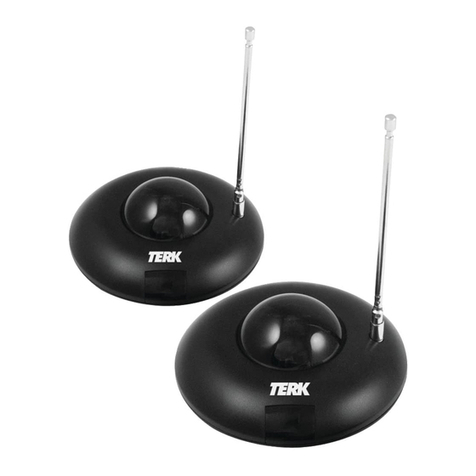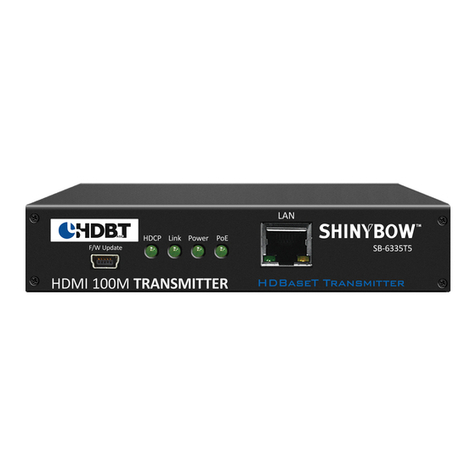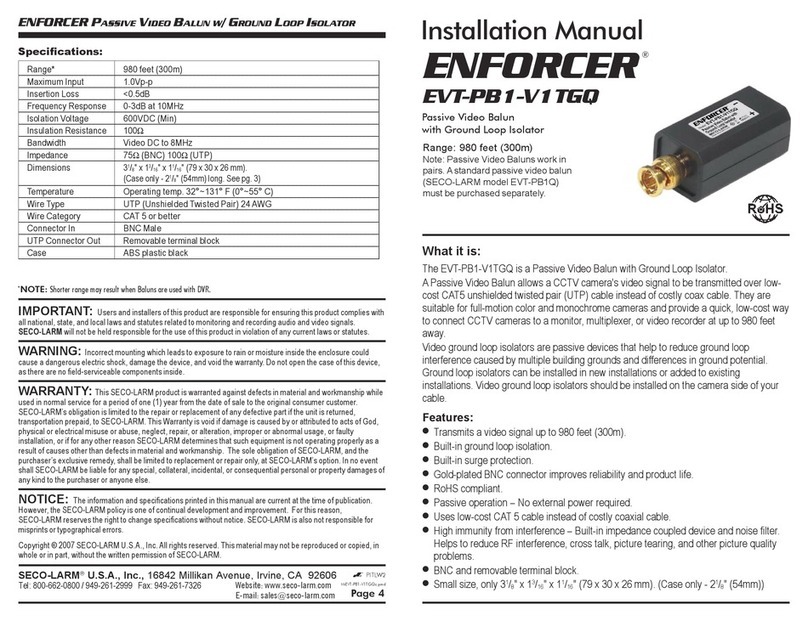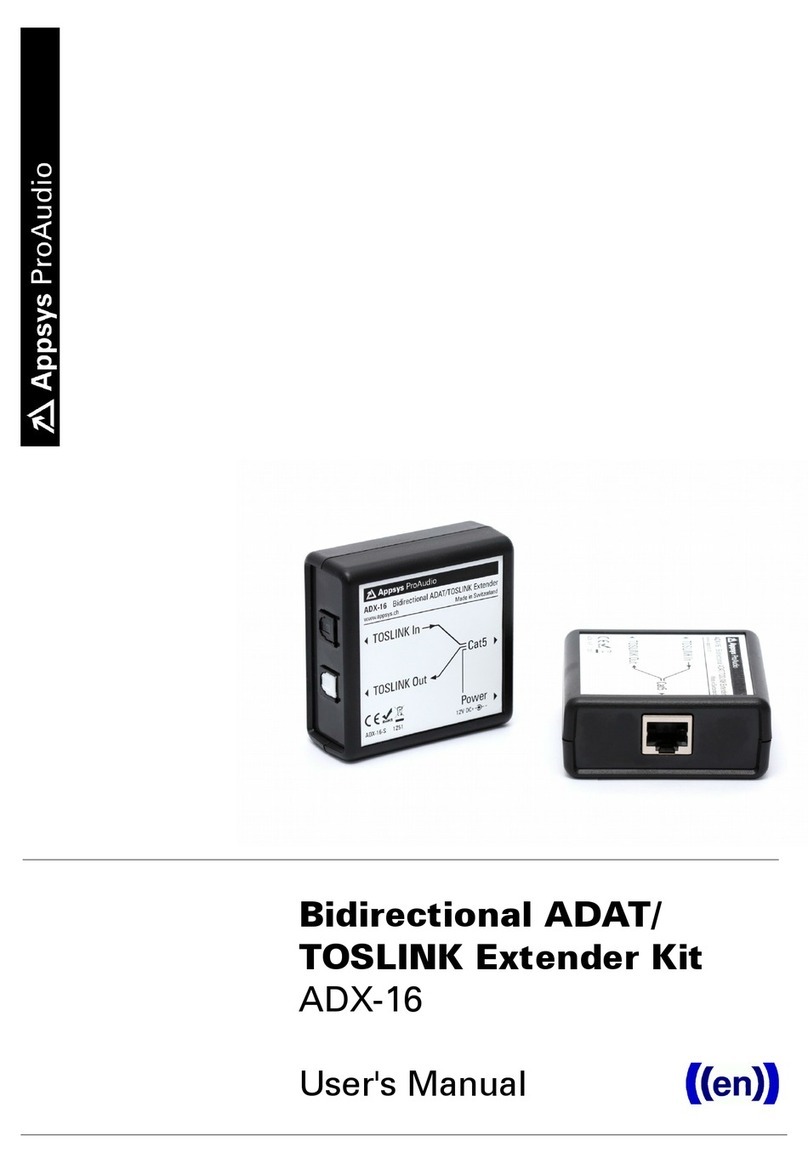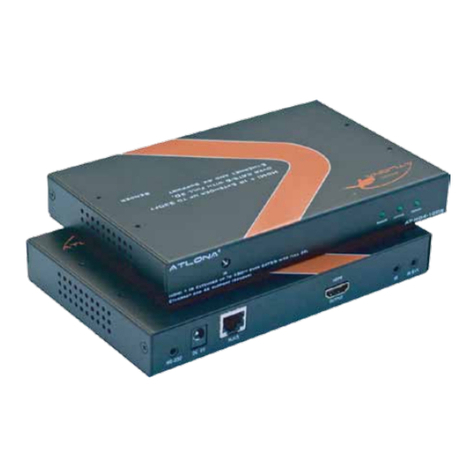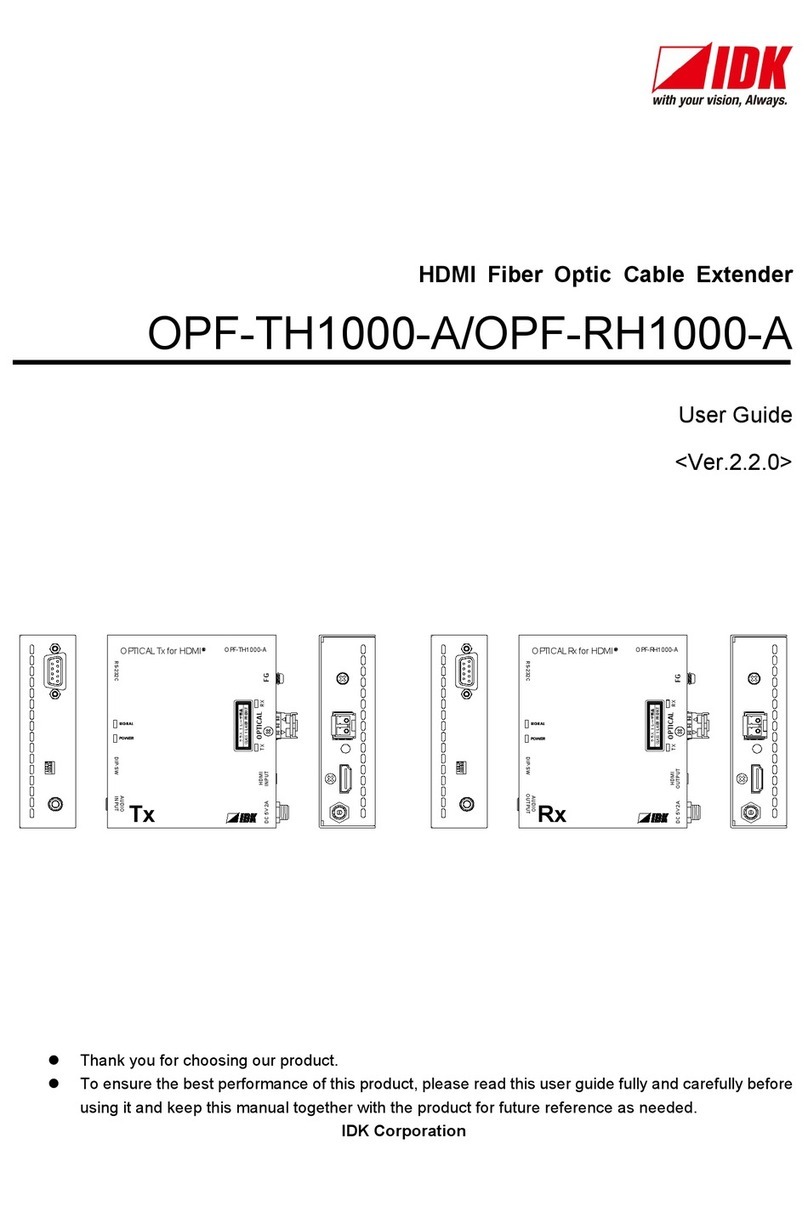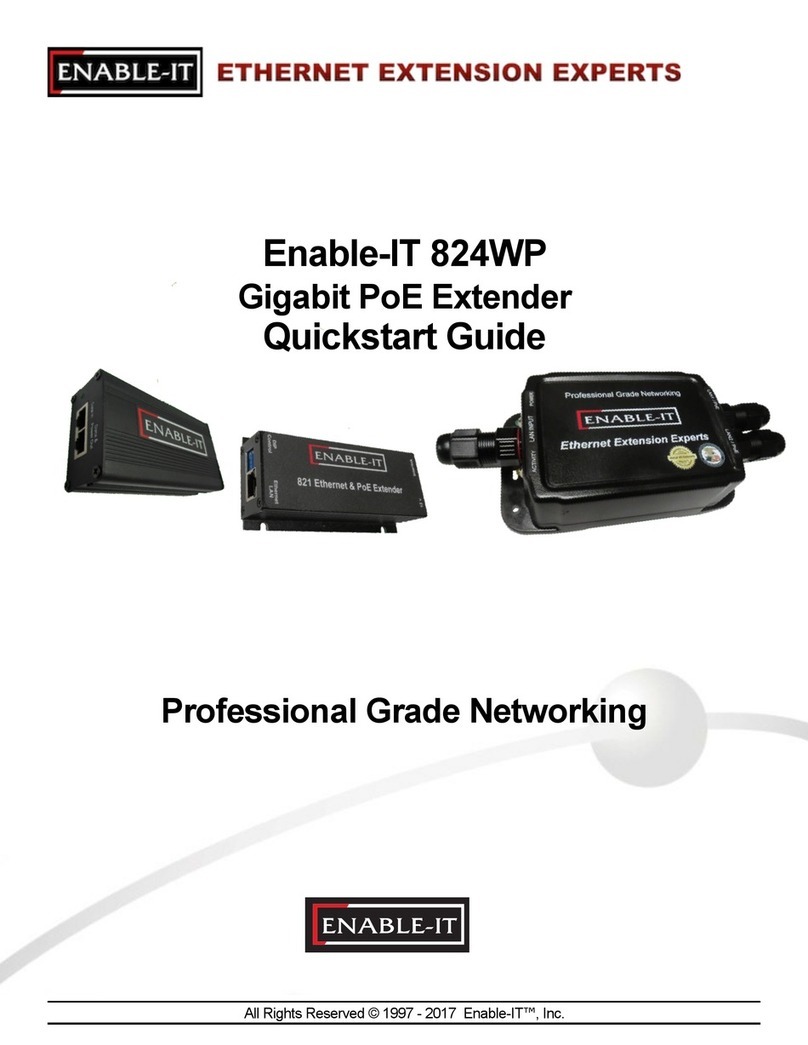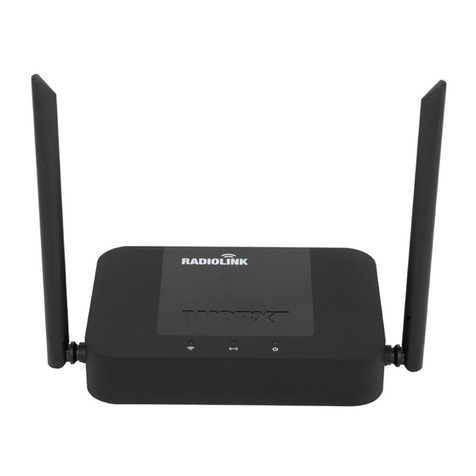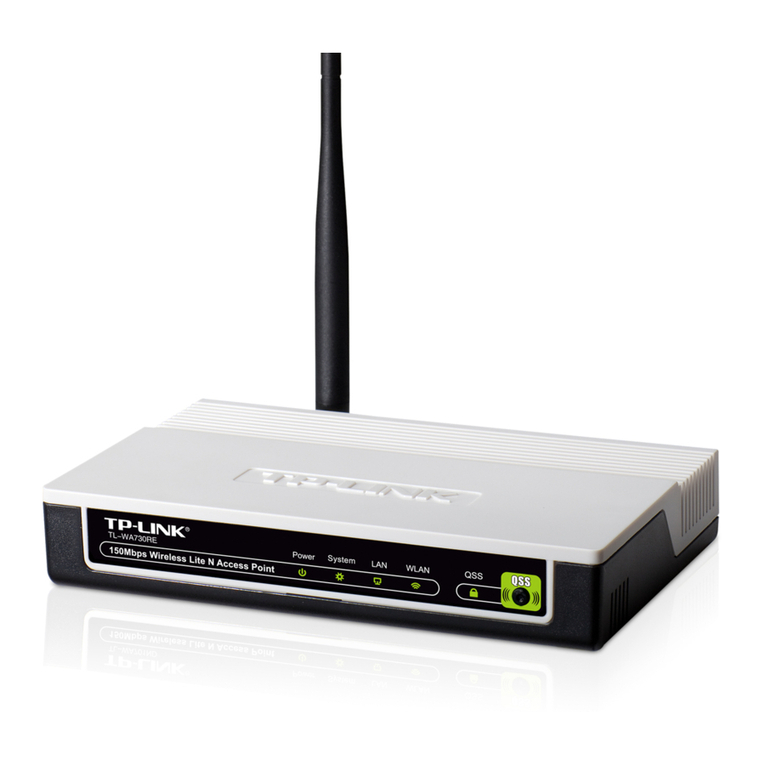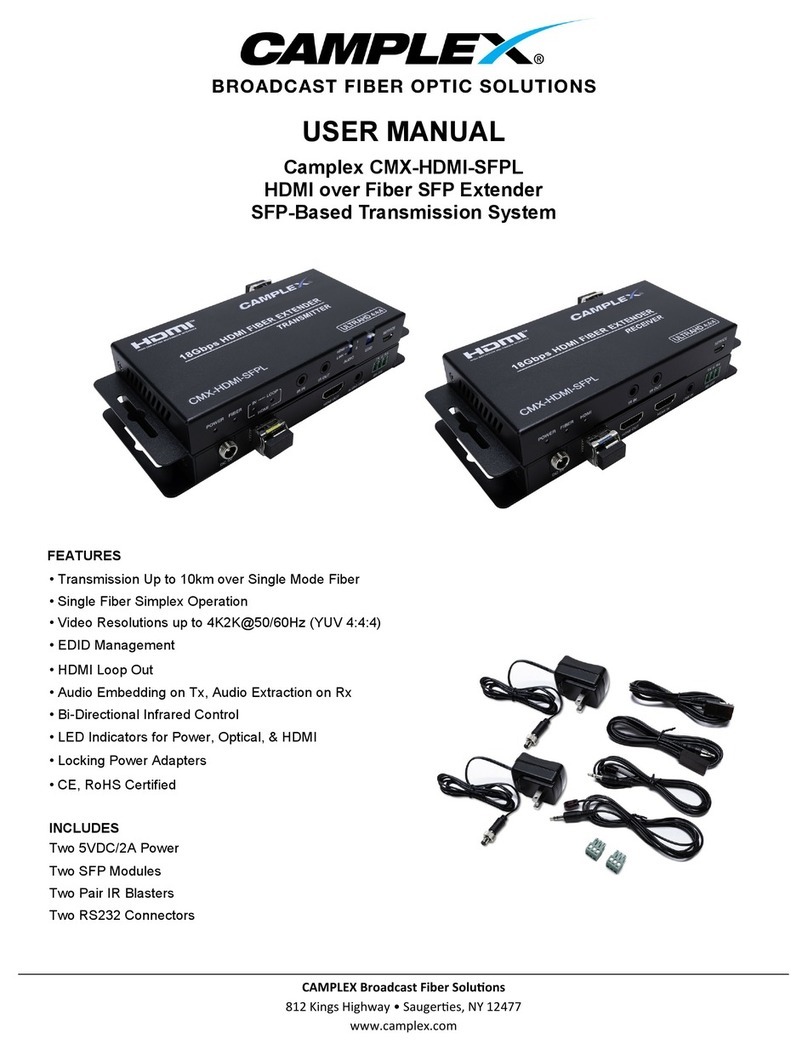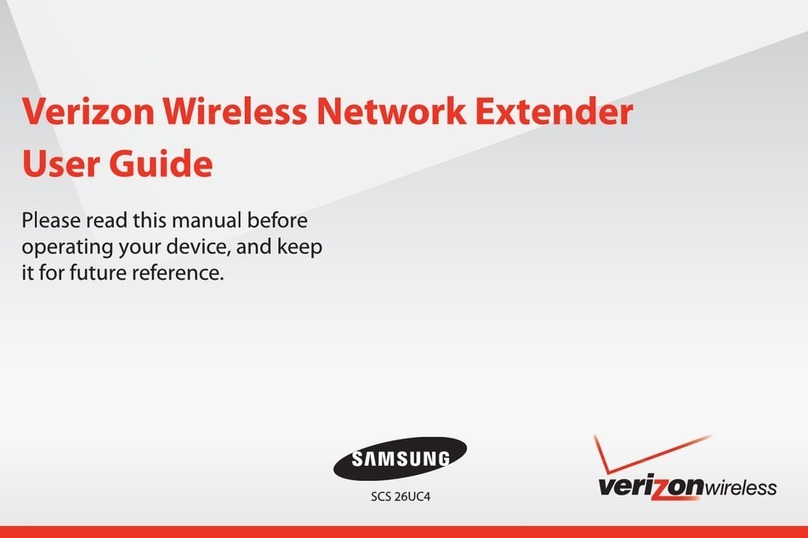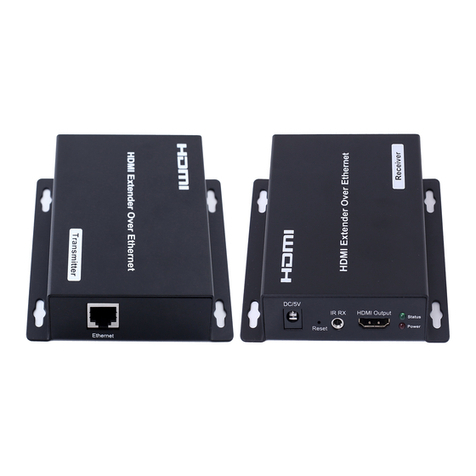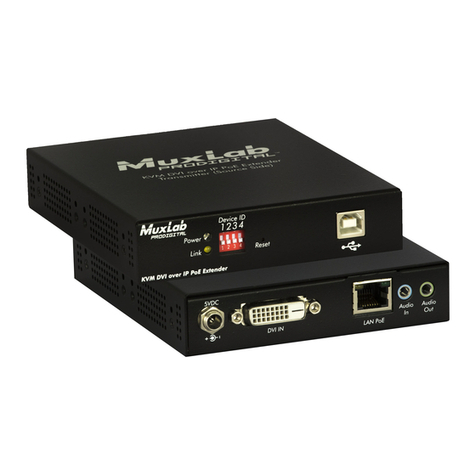Technical data
power supply
local unit : from PC
remote unit : 9V DC Regulated, 1000mA, Floating Output
interfaces
monitor : VGA, SVGA, XGA, RGB
resolution up to 1280x1024 NO Plug&Play!
keyboard : IBM-PS/2 (AT with adaptor)
mouse : IBM-PS/2 Two Button, Microsoft Intellimouse
Logitech 3-Button PS2
serial (only SDLink/AM) : transparent with handshake up to 19200 BAUD
audio (only SDLink/AM) : bidirectional, virtual CD-quality 38,4kHz, 16 Bit
interconnect cable : simplex S-UTP Cat5 4x2xAWG24, e.g. type 402-0J or
(not in schedule of parts) wiring according EIA/TIA
max. distance : up to 50m (app. 160 ft)
dimensions
weight : app.1.5 kg Complete package, 0,25 each unit
length/width/height : app. 110 x 80 x 25 mm: SDLink/LC (2 devices)
app. 110 x 80 x 44 mm: SDLink/DM + /AM (2 devices)
temperature operation : app. 10°C ... 45°C
Compatibility
To operate in various environments and with hardware from many manufacturers, this product
has a number of specific features, and has been tested with a wide variety of hardware.
However, it is impossible to guarantee correct operation with every keyboard, monitor, mouse
and motherboard currently on the market.
The CAT5 KVM Mini Extender is compatible with the following equipment:
System Unit: PC/AT, PS/2 and 100% compatible clones.
Keyboard: PC/AT, Enhanced Keyboard. Some older XT/AT auto-
sensing keyboards may not be compatible
PS/2 Mouse: Standard PS/2 Mouse, Microsoft Intellimouse,
Logitech 3-Button PS/2 Mouse
Monitor: VGA, Super VGA, XGA, RGB (Sync-on-Green)
Note: If your PC does not have a PS/2 style mouse port, the Mini Extender may be connected to
a serial port of your PC via an additional mouse protocol converter (MDAPT).
Features:
•Supports High Video Resolutions for use with TFT displays
1600x1200 (60Hz) @ 200 Metres
1280x1024 (75Hz) @ 300 Metres
Higher resolutions may be possible at shorter distances. Maximum distances quoted will be
less with higher refresh rates
•Integrated Skew Compensation for operation with any CATx cable.Skew compensation
available on all video channels. Skew compensation available on any (or all) colours. Maximum
compensation of 42nS is sufficient for most applications. Compensation step size is 2.8nS
•Independent Low-Frequency (LF) and High-Frequency (HF) Equalization Adjustment ensures
optimum video tuning
revision: August, 2003 SDBX KVM Extender
Technical data 25

